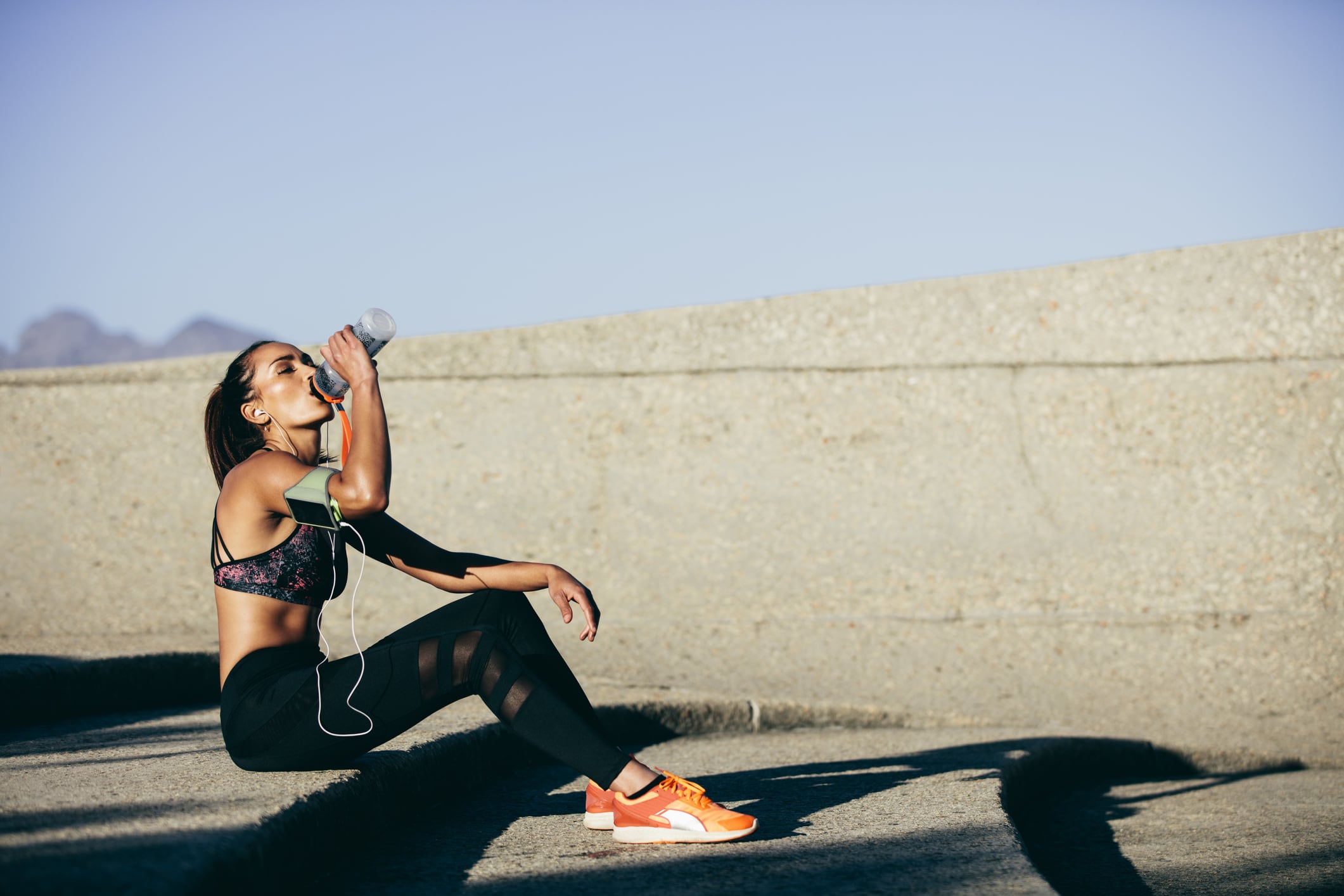The new randomised, double-blind, clinical trial found that when OliPhenolia (OliP), the HT rich olive water, was supplemented during exercise, it had favourable effects on several important running performance indicators.
During the study, 29 recreationally active participants consumed two 28ml of OliP or a taste-and-appearance-matched placebo over 16 consecutive days, while completing demanding, aerobic exercise. The resulting data indicated that OliP led to modest improvements in acute recovery based upon a shorter time to achieve 50% of the end of exercise VO2 Max value. Whilst OliP also increased time to exhaustion (+4.1 ± 1.8%), this was not significantly different to the placebo group (p > 0.05).
The study, led by researchers at Anglia Ruskin University, and funded by OliP producer Fattoria La Vialla, from Italy, concluded: “Phenolic compounds present in OliP, including hydroxytyrosol (HT) and related metabolites, may provide benefits for aerobic exercise and acute recovery in recreationally active individuals.”
OliPhenolia
OliP is a commercially available polyphenol-rich olive fruit water. The by-product typically discarded during the production of olive oil, is extracted via concentration, reverse osmosis, and ceramic membrane technology at the aqueous part of the olive fruit and the leaf.
The product is produced via Demeter-certified biodynamic agriculture and is a source of bioavailable polyphenols. It is predominantly rich in HT, a recognised antioxidant that has been highlighted in previous studies for its protection against oxidative stress in vascular tissue, as well as low-density lipoprotein oxidation, and a reduction in oxidative damage in intestinal epithelial cells, hepatocytes, and erythrocytes.
The study
The clinical trial included 29 participants (42 ± 2 yrs; 71.1 ± 2.1 kg; 1.76 ± 0.02 m). Over 16 days, participants consumed two 28ml drinks daily, one mid-morning and one mid-afternoon, between meals, of either OliP or the placebo. To monitor adherence, participants returned all jars at the end of the trial.
Participants completed aerobic exercises prior to, during, and following the 16-day consumption period. Exercise intensities were calculated using lactate profiles from the first visit and remained consistent in visit 3 and 5. Visits 1, 3 and 5 consisted of a two-part graded exercise test including a submaximal incremental protocol, with a 10 min recovery period; and a maximal test to volitional exhaustion.
Data revealed that, at lower intensities of exercise, known as lactate threshold 1 (LT1), OliPhenolia consumption enhanced running economy, oxygen consumption, and respiratory parameters.
The authors state that a reduction in relative VO2 max (the maximum rate of oxygen consumption attainable during physical exertion) was found in the OliP group between visit 3 and 5 (F = 7.09, p = 0.013, ηp2 = 0.22).
Additionally, perceived exertion and acute recovery both improved, however other higher intensity respiratory parameters , known as lactate threshold 2 (LT2), were unaffected.
Mechanism of action
The authors hypothesise the benefits here may come as a result of the HT and related metabolites impacting mitochondrial function. They state: “A relatively low HT dose was employed as part of the olive-derived phytocomplex in healthy volunteers. Whilst mitochondrial function was not directly assessed, it is feasible that HT and related gut-derived phenolic metabolites may have facilitated improved oxygen cost responses observed at the onset of exercise and during LT1.”
Previous studies have found that polyphenol nutrients could support mitochondrial function and could therefore modulate essential biological functions.
The mechanisms by which polyphenols may facilitate ergogenic effects are reported to occur via nitric oxide synthase production, as well as the activation of sirtuin 1 (SIRT1).
Sirt1 has been found to facilitate mitochondrial biogenesis, endothelial function, cell proliferation and differentiation, metabolic efficiency, stress resistance, and improve inflammatory and immune function.
The authors state: “The role HT may play in enhancing mitochondrial respiratory capacity could provide a rationale for the reduced oxygen consumption observed during sub-maximal exercise at LT1. Although not measured in this study, this may support the proposed benefits of OliP in a submaximal exercise domain.
“It is also viable that other phenolic compounds (i.e., oleuropein aglycone) and HT derivatives (i.e., HT glucosides) found in OliP may also support antioxidant pathways that may influence aerobic performance."
Limitations
There were several limitations to the study. While improvements were found in some parameters, not all provided decisive results.
The authors state: “Change in time constant at the onset of exercise was noted within-group only for OliP and therefore should be interpreted with caution. Likewise, during acute recovery, whilst improvements were observed for T50%, other parameters using respiratory off-kinetics were not deemed significant, and again results should be interpreted carefully.”
Additionally, the authors note that while improvements were observed at LT1 with healthy, recreationally active volunteers, distinction as to whether effects were pertinent to gender, training status, or the type/intensity of habitual exercise were lacking. The authors conclude: “Further research may be relevant to determine the potential applications of OliP in various cohorts.”
Journal: Nutrients
https://www.mdpi.com/2072-6643/15/2/421
“The Effect of a Hydroxytyrosol-Rich, Olive-Derived Phytocomplex on Aerobic Exercise and Acute Recovery”
Authors: Justin D. Roberts, Joseph B. Lillis, Jorge Marques Pinto, Havovi Chichger, Álvaro López-Samanes, Juan Del Coso, Rodrigo Zacca and Ashley G. B. Willmott.


